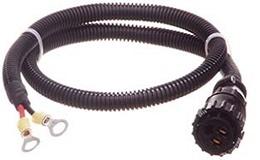When it comes to electrical connections, it’s crucial to use the right type of cable for the job. Two common types of cables used for powering equipment are welding cable and battery cable. While they may look similar, they have distinct differences that make them better suited for certain applications. When selecting a cable, it’s important to consider factors such as the amount of current that will be flowing through it, the length of the cable, and the environment in which it will be used. For battery-powered applications, a battery cable assembly is often the best choice, as it’s specifically designed to handle the unique requirements of battery-powered systems.
What is Welding Cable?
Welding cable is a flexible, rubber-insulated cable designed for use in high-current applications, particularly welding machines. It’s capable of carrying high amperage loads and has durable, heat-resistant insulation that can withstand the harsh conditions found in welding environments.
What is Battery Cable?
Battery cable, on the other hand, is a heavier gauge, the more rigid cable that’s used to connect batteries to power systems. It’s commonly used in automotive, marine, and solar power applications, where it’s exposed to vibrations, moisture, and other harsh conditions. In the USA, battery cable is manufactured by several leading battery cable suppliers, who offer a wide range of products to meet the needs of various industries. Whether you need a standard battery cable assembly or a custom solution designed to meet specific requirements, there are many options available to choose from.
Comparing Welding Cable and Battery Cable
- Conductor Material
Welding cable and battery cable both use copper conductors, but welding cable typically uses a finer-stranded conductor than battery cable. The finer-stranded conductor makes welding cable more flexible and easier to bend than battery cable, which is typically less flexible due to its larger gauge wire.
- Insulation Material
The insulation material used in welding cable is designed to withstand high temperatures and resist abrasion, making it more durable than the insulation used in battery cable. The battery cable insulation is often made of PVC or a similar material that’s more flexible than welding cable insulation but not as heat resistant.
- Gauge Size
Welding cable typically comes in smaller gauge sizes than battery cable, with sizes ranging from 6 AWG to 4/0 AWG. Battery cable, on the other hand, is usually available in larger gauge sizes, ranging from 1/0 AWG to 4/0 AWG. The larger gauge size makes battery cable better suited for carrying larger current loads.
- Voltage Rating
Both welding cable and battery cable are rated for use at 600 volts, but welding cable is typically designed for use at a lower voltage than battery cable. Battery cable is often used in applications where higher voltages are present, such as in automotive or solar power systems.
- Applications
Welding cable is primarily used in welding machines, while battery cable is used in a variety of applications, including automotive, marine, and solar power systems. Battery cable is also commonly used in custom battery cable assembly manufacturing.
Choosing the Right Cable for Your Application
When selecting a cable for your application, it’s important to consider the specific requirements of the job. Here are some factors to consider:
- Current Load: If you’re working with high current loads, such as those found in welding machines, welding cable is the better choice. Battery cable is better suited for applications where the current load is lower.
- Flexibility: If you need a cable that’s flexible and easy to bend, welding cable is the better choice. If flexibility isn’t a major concern, battery cable may be a better option.
- Environment: If your cable will be exposed to high temperatures or harsh conditions, welding cable is the better choice. Battery cable is better suited for applications where it will be exposed to moisture or other environmental factors.
- Voltage: If you’re working with higher voltages, battery cable is the better choice. If you’re working with lower voltages, welding cable may be a better option.
Final Thoughts
When it comes to selecting the right cable for your application, there are many factors to consider. Welding cable and battery cable have distinct differences that make them better suited for different applications. If you’re unsure which cable to use, it’s best to consult with a reputable battery cable manufacturer to ensure that you select the right cable for your needs.
Additionally, it’s important to ensure that the cable you choose is of high quality and meets all relevant safety standards. This is particularly important for applications where the cable will be used in close proximity to people or sensitive equipment. For this reason, it’s recommended to work with a reputable battery cable assembly supplier, particularly if you’re looking for a custom battery cable assembly that meets specific requirements.
Reputable battery cable manufacturers in the USA can provide a wide range of battery cable options, including custom assemblies designed to meet your specific needs. By working with Star Engineering Inc you can ensure that you get the right cable for your application and that it meets all relevant safety and performance standards.



